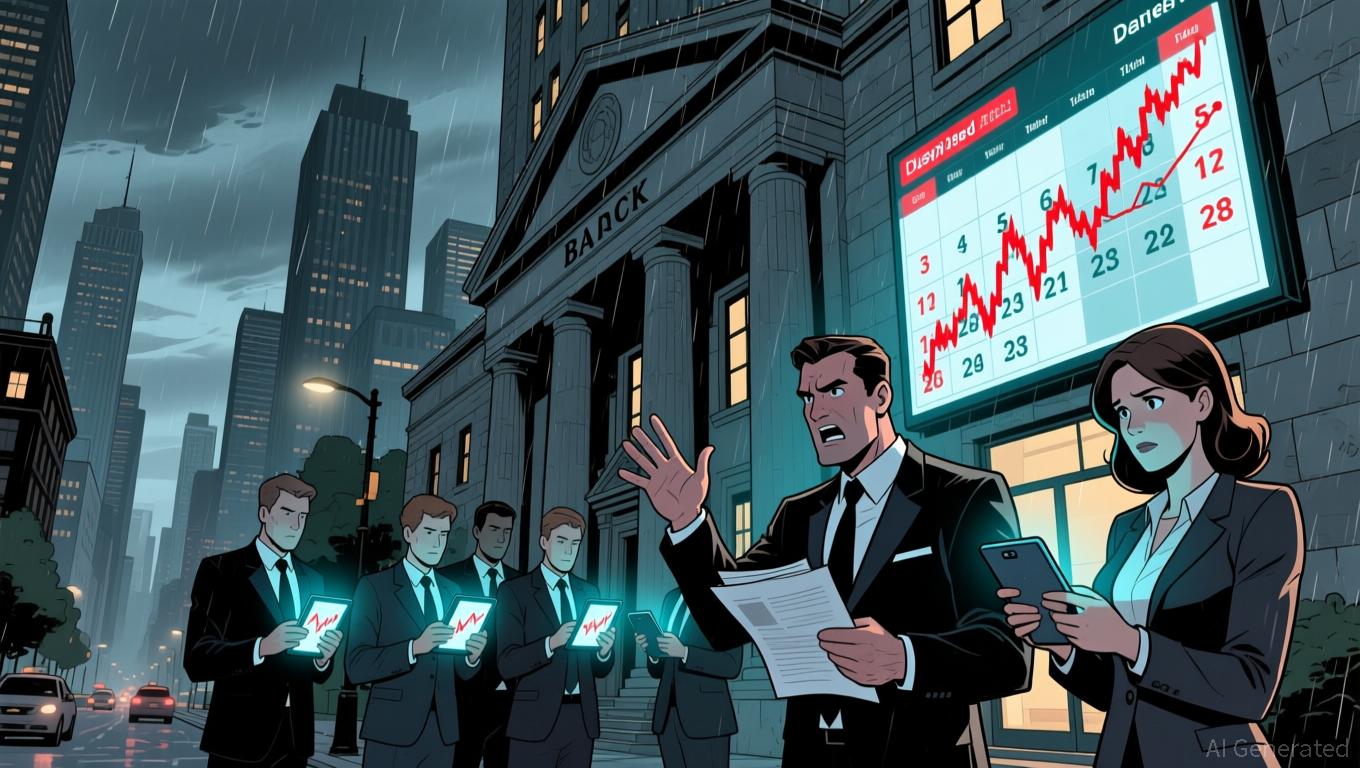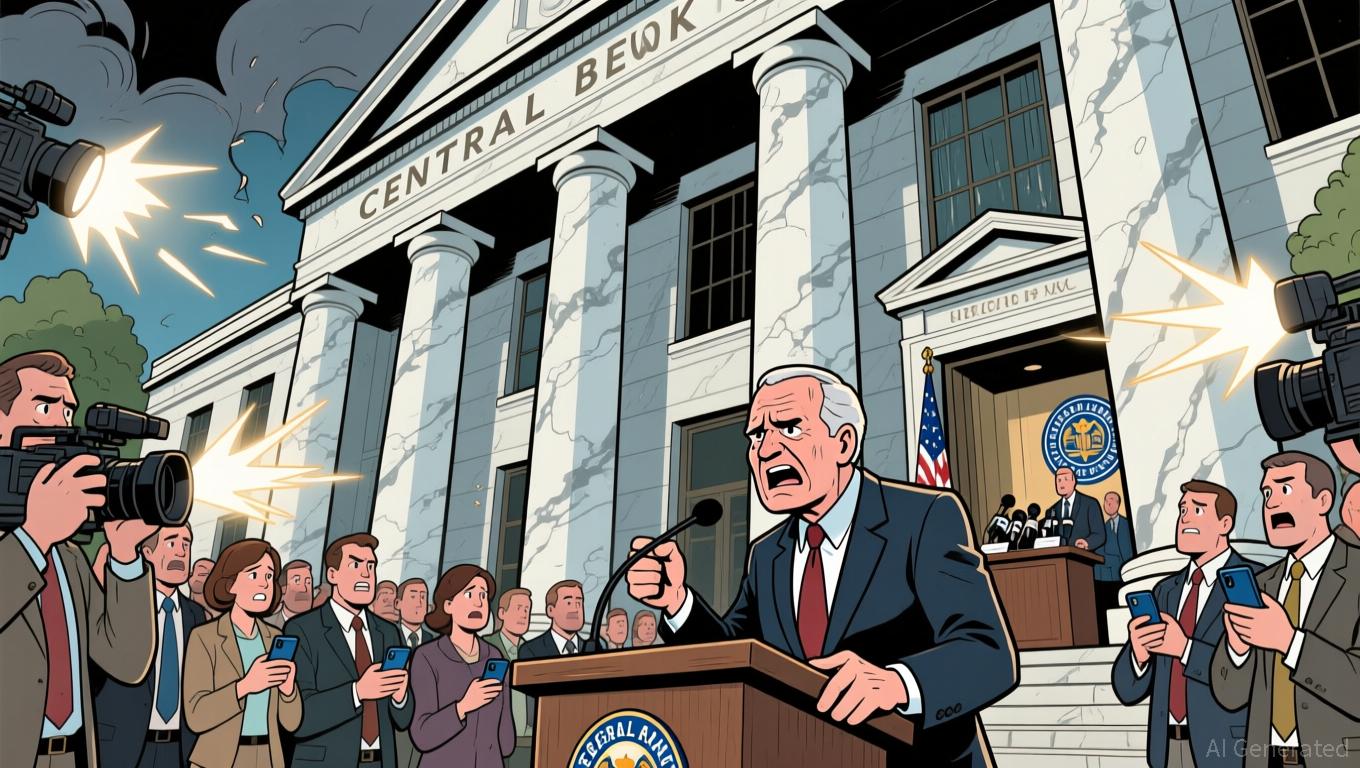Fed's Division on Rate Cuts Widens as October Employment Figures Disappear, Obscuring Policy Direction
- U.S. Bureau of Labor Statistics cancels October jobs report, leaving unemployment and nonfarm payroll data missing due to government shutdown. - Fed faces policy uncertainty as internal divisions deepen over rate cuts, with October meeting minutes revealing stark disagreements on 2025 reductions. - Delayed November report and missing household survey data complicate labor market assessment, risking misaligned inflation and employment policies. - Trump administration pressures Fed for lower rates while ma
The U.S. Bureau of Labor Statistics (BLS) has decided not to publish the October jobs report, meaning figures for unemployment and nonfarm payrolls for that month will not be released due to interruptions from the recent government shutdown. Instead, the BLS will merge October's nonfarm payroll numbers with the November report, but the household survey—which is essential for determining the unemployment rate—will be
Disagreements within the Fed over interest rate reductions have intensified, as the minutes from the October meeting reveal sharp divisions among members. Although a 25-basis-point cut was approved in October, officials were divided on whether further cuts—especially in December—were justified. The minutes indicated that "many" members felt no further reductions would be needed in 2025, while "several" believed there was still room for another cut
The missing October unemployment figures have increased market volatility. Investors, who were almost certain of a December rate cut, are now adjusting their expectations in light of the Fed’s divided stance. The delay in the November report, along with the Fed’s extended data collection, has left traders uncertain about the state of the labor market and inflation risks

Mixed signals from the labor market further complicate the situation. While October’s nonfarm payrolls will eventually be included in the November figures, the absence of household survey data means the unemployment rate will not be known. This lack of information could lead to policy missteps, as the Fed’s dual goals of maintaining employment and controlling inflation depend on having comprehensive economic data
The broader consequences for financial markets are considerable. With divisions within the Fed growing, investors are preparing for a less predictable policy landscape. The cancellation of the October report and the subsequent delay of November’s data have highlighted the vulnerability of the U.S. economic system, especially in an election year marked by political division and uncertainty
Disclaimer: The content of this article solely reflects the author's opinion and does not represent the platform in any capacity. This article is not intended to serve as a reference for making investment decisions.
You may also like
Fed's Split Opinions and Incomplete Data Obscure Prospects for Rate Reduction
- Fed's December rate cut odds drop to 39.6% due to missing October jobs data and inflation uncertainty. - Market jitters rise as gold falls, dollar strengthens, and crypto faces pressure amid policy uncertainty. - Fed factions debate inflation control vs labor support, with CME pricing 44% chance of 25-basis-point cut. - Central bank plans to end quantitative tightening in December, but data gaps complicate policy calibration. - 2026 may see slower easing cycle as investors monitor November payrolls and F

$40K Gas Fee Turns Into $1M Gain: Jesse Token Sniping Highlights Barriers to Entry in Crypto
- An address paid $40K in gas fees to secure 7.6% of Jesse token, netting $1M profit after selling its stake. - The "scientist" actor exploited advanced tools to front-run Jesse's token sale, highlighting DeFi's competitive "sniping" dynamics. - High gas fees and technical barriers concentrate token sale opportunities among well-resourced participants, raising accessibility concerns. - Jesse token's launch, led by Base co-founder, reflects broader crypto trends where strategic timing and resources drive sp

Bitcoin's Latest Price Fluctuations and Growing Institutional Interest: Optimal Timing for Investment as Regulations Become Clearer and Economic Conditions Evolve
- Bitcoin's 2025 volatility reflects institutionalization, with $11B in Q3-Q4 2025 ETF inflows and corporate buyers like MicroStrategy accumulating BTC. - Regulatory clarity via the GENIUS Act and Tether's Latin American expansion accelerated institutional adoption, despite U.S. state-level restrictions creating short-term uncertainty. - Macroeconomic tailwinds including Fed rate cuts and $96T global M2 money supply supported Bitcoin's $200,000 price target, lowering capital costs for long-term holdings. -
Solana’s Latest Price Rally: Could This Signal the Beginning of Another Bull Market?
- Solana's 2025 upgrades (Firedancer, Alpenglow, ZK Compression v2) enhance scalability to 1M TPS and reduce costs by 5,200x, positioning it for institutional adoption. - Institutional partnerships with Western Union (USDPT), Google Cloud, and ETFs (BSOL/GSOL) drive $111M inflows and validate Solana as a financial infrastructure backbone. - While SOL trades at $141 under bearish pressure, technical upgrades and real-world use cases suggest long-term growth potential beyond speculative trading cycles.